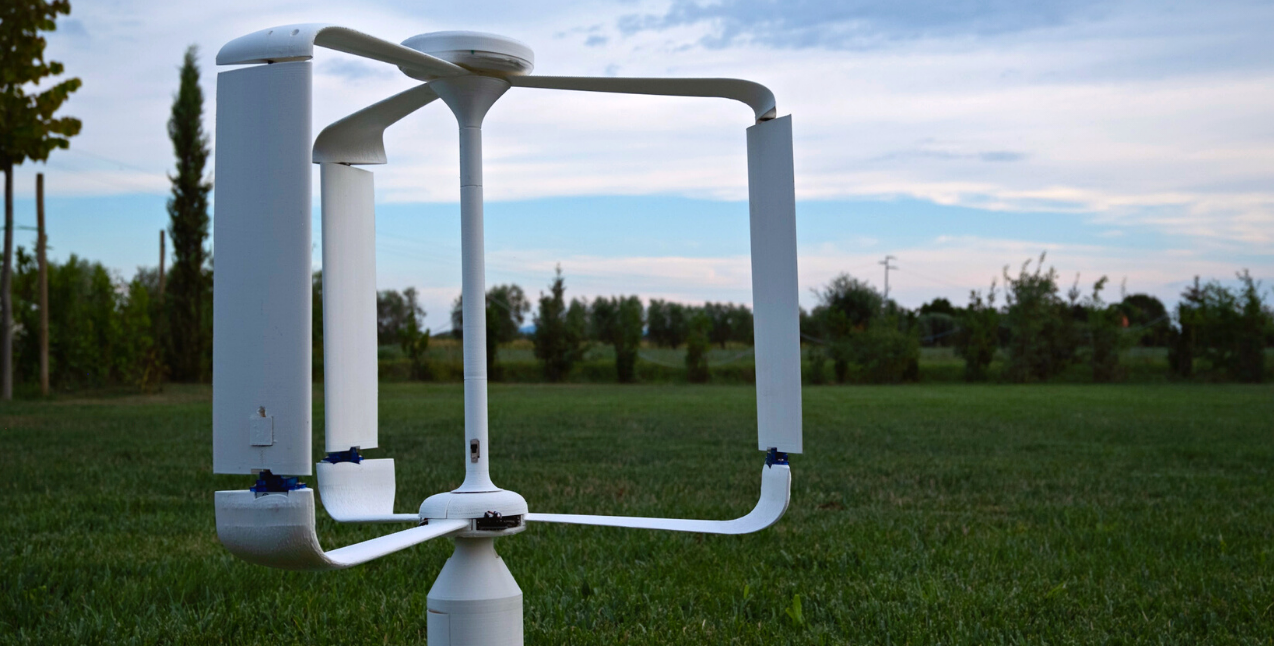Would you like to know more about the prototype developed by GEVI?
Find out with us!
vol. 3
27 September 2022
TOWARDS THE FUTURE OF WIND ENERGY
By Edoardo Simonelli, Eleonora Cacchio
GEVI is an Italian startup that develops and builds intelligent vertical wind turbines (VAWT), using flexible hardware and artificial intelligence (AI) software selfspecializing in multiple locations and wind conditions.
The turbines developed by GEVI are characterised by an actively controlled blade pitch angle, in order to adapt the vertical blade position to the incoming wind direction and intensity. In this way, it is possible to predict the wind and its recurrent patterns and maximise the extracted power. The resulting turbine efficiency will be higher than 45%.
The blade control system also elaborates real-time structural integrity and fatigue data, to actively reduce vibrations and dynamic loads on the blades and tower structure. This extends the blade operating life while making it lighter and simplifying the installation.
The first self-training wind turbines, constantly learning from the wind.
Moreover, the turbine (including electronics and controllers) is easily integrable with “Internet of Things” (IoT) systems, enabling the exchange of data with the external world. In this way, it will be possible to optimize the synergy between nearby turbines in a wind farm; introduce predictive maintenance, real-time performance monitoring and alert systems.
GEVI has already built and tested a demonstrator prototype of 30 W nominal power, which is 50 cm in diameter and 60 cm in height.
On-field tests on this demonstrator proved a 2x increase in power extracted when the pitch control system was activated.
The first pilot of 1 kW is under construction and will be 2.5 m in diameter and 1.8 m in height. Our scaled 1 kW turbine will be capable of obtaining great results targeting a 50% increase in energy produced per year compared to a standard VAWT (vertical axis wind turbine) of the same size.
The architecture of the turbine makes it highly scalable and installable in many different locations, from urban areas (such as on high roofs and telecommunication towers) to the open sea (off-shore).
Adaptability, reliability and efficiency are the main points for our turbines, which will be able to solve the problems that have limited the spread of distributed wind energy until the present day.



